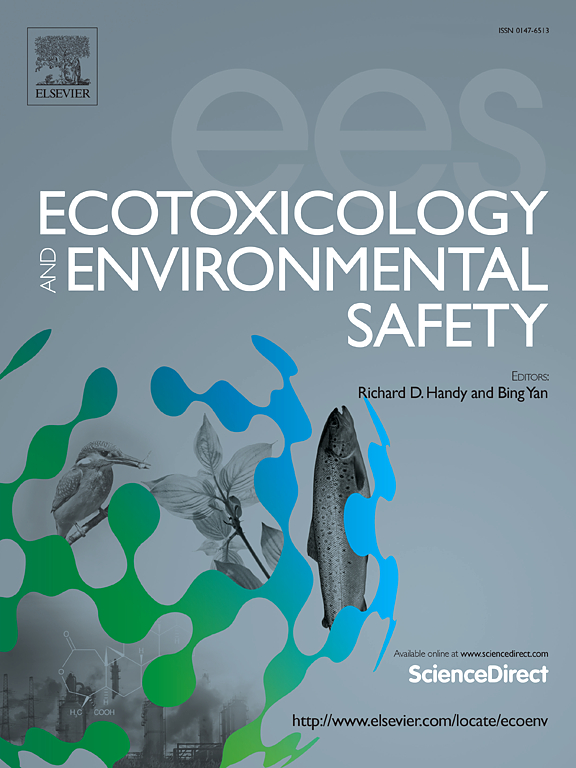Physiological and transcriptomic responses of pumpkin to lead and ozone stress
IF 6.1
2区 环境科学与生态学
Q1 ENVIRONMENTAL SCIENCES
引用次数: 0
Abstract
The co-pollution of ozone (O3) and lead (Pb) poses significant threats to crop growth and human health, thus attracted serious concern. This study examined the individual and combined effects of Pb and O3 treatment on the growth, photosynthesis, antioxidant enzyme activity, gene expression, and the ascorbate-glutathione (ASA-GSH) cycle in pumpkin seedlings. The results revealed that Pb and O3 treatments, both individually and in combination, significantly inhibited the growth of pumpkin seedlings, as evidenced by reductions in leaf area, stem diameter, dry weight, and fresh weight. Remarkably, the combined Pb and O3 treatment exhibited more pronounced negative effects on plant growth than the individual stressor. This phenomenon could be attributed to two key factors. First, the co-exposure of Pb and O3 disrupted chlorophyll synthesis and reduced the activity of key photosynthetic enzymes (Rubisco and FBPase) by downregulating the expression of photosynthesis-related genes (RCA, RBCS, and FBPase), thereby impairing photosynthesis and hindering pumpkin growth. Second, the combined treatment reduced antioxidant enzyme (SOD, POD, CAT, and GR) activity, disrupted the ASA-GSH cycle, and triggered the malondialdehyde (MDA) accumulation, thus exacerbating oxidative damage. This study provides new insights into the broader impacts of atmospheric and soil pollution on crop health, resilience and safety.
南瓜对铅和臭氧胁迫的生理和转录组反应
臭氧(O3)和铅(Pb)的共同污染对作物生长和人类健康构成重大威胁,引起了人们的严重关注。本研究考察了Pb和O3处理对南瓜幼苗生长、光合作用、抗氧化酶活性、基因表达和抗坏血酸-谷胱甘肽(ASA-GSH)循环的单独和联合影响。结果表明,Pb和O3单独处理和组合处理均显著抑制了南瓜幼苗的生长,表现为叶片面积、茎粗、干重和鲜重的减少。与单独胁迫相比,Pb和O3联合处理对植物生长的负面影响更为显著。这一现象可归因于两个关键因素。首先,Pb和O3共暴露破坏了叶绿素合成,通过下调光合作用相关基因(RCA、RBCS和FBPase)的表达,降低了关键光合酶(Rubisco和FBPase)的活性,从而损害了光合作用,阻碍了南瓜的生长。其次,联合处理降低了抗氧化酶(SOD、POD、CAT和GR)活性,破坏了ASA-GSH循环,引发丙二醛(MDA)积累,从而加剧了氧化损伤。这项研究为大气和土壤污染对作物健康、恢复力和安全的更广泛影响提供了新的见解。
本文章由计算机程序翻译,如有差异,请以英文原文为准。
求助全文
约1分钟内获得全文
求助全文
来源期刊
CiteScore
12.10
自引率
5.90%
发文量
1234
审稿时长
88 days
期刊介绍:
Ecotoxicology and Environmental Safety is a multi-disciplinary journal that focuses on understanding the exposure and effects of environmental contamination on organisms including human health. The scope of the journal covers three main themes. The topics within these themes, indicated below, include (but are not limited to) the following: Ecotoxicology、Environmental Chemistry、Environmental Safety etc.

 求助内容:
求助内容: 应助结果提醒方式:
应助结果提醒方式:


